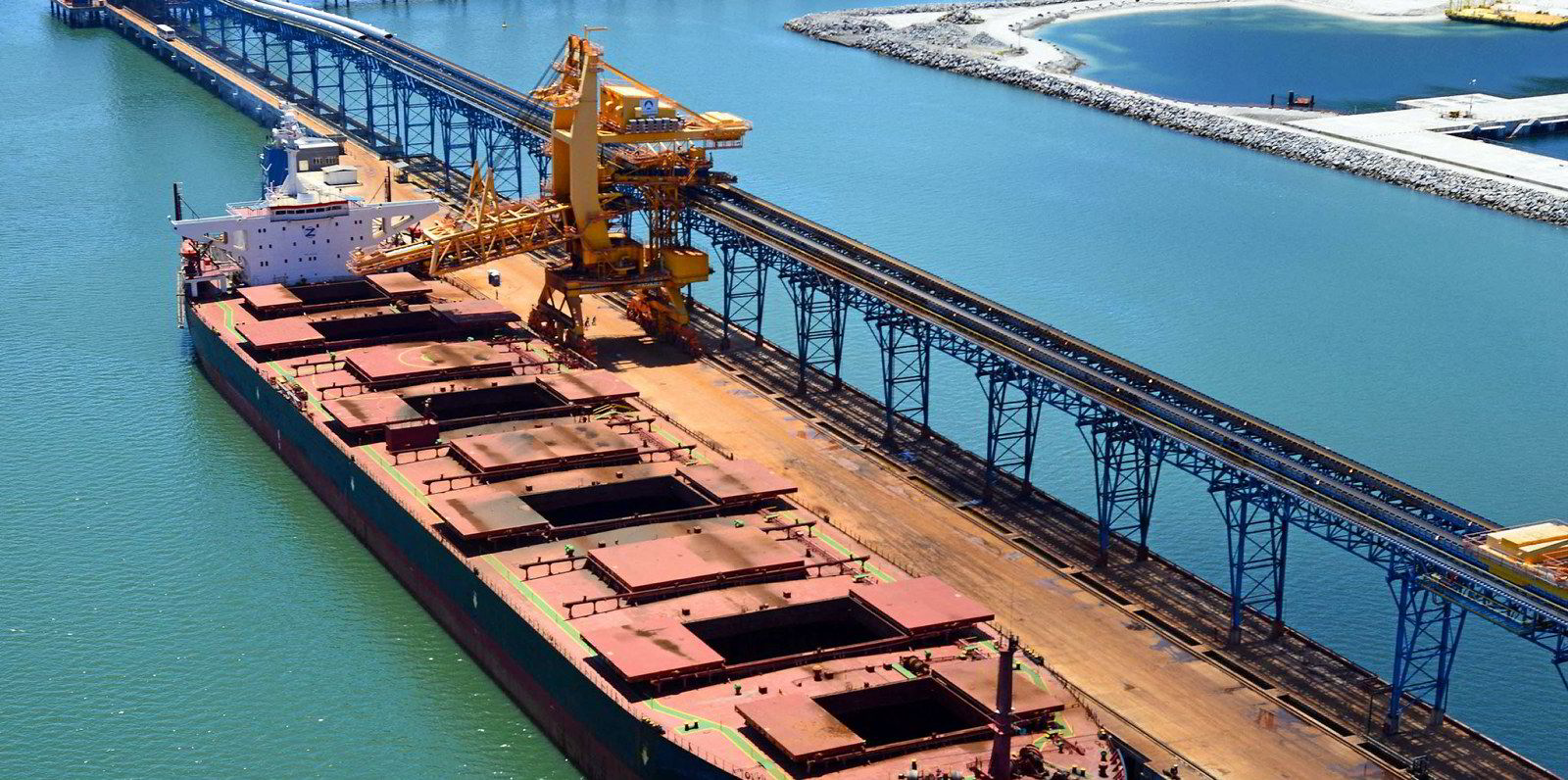Charterers are offering freight premiums to book capesize bulk carriers loading in the Atlantic ahead of the Lunar New Year in Asia in mid-February.
The end of this week has seen assessments for capesize spot rates being revised upwards significantly, with the Atlantic basin seeing the biggest gains.
The weighted average of spot rates across five key capesize benchmark routes (5TC) — the key indicator for the overall strength of the spot market — was assessed $3,243 higher on Friday at $18,608 per day. This is almost 20% more than on Monday.
Vessel positioning is playing a key role in keeping the spot market in the Atlantic firm, according to a market roundup by the Baltic Exchange.
“Premiums are being offered to secure tonnage for loading from South Brazil and West Africa by February 10th cancelling. However, the North Atlantic is facing pressure due to limited cargo availability, resulting in limited activity,” the Baltic said in its daily market report on Thursday.
The biggest advances in rate assessments were seen on routes loading in the Atlantic for voyages bound for Asia.
A huge $2.45 per tonne was added on Friday to estimates of iron-ore voyages from Brazil to China, which were assessed at $23.833 per tonne. This means that a tonne of Brazilian iron ore costs almost $3 more to be carried to China than it did on Monday.
Similarly, iron ore voyages from Saldanha Bay in South Africa to China were assessed $1.106 higher at $16.356 per tonne.
The rival Australia-China voyage for iron ore was priced 63 cents higher than on Thursday at $8.77 per tonne, which is 95 cents above Monday’s level.
Fixtures by big-name miners reported at progressively higher rates have added to confidence in the market.
Thursday saw BHP take two capesizes for Australian iron ore bound for China at $8 and $8.15 per tonne, loading from 3 February. This is some advance on the $7.90 per tonne that was reported on Monday, when Rio Tinto was reported to have booked a capesize to take iron ore to China from nearby Dampier in early February.
Deals for Brazil loadings have been thin, but on Thursday a capesize was reported fixed by Pacific Bulk for a China run at $22.35 per tonne in early February, which indicated the upwards momentum when compared to last week.
Thirty-nine capesize bulk carriers are expected to arrive at Brazilian ports in ballast by the end of this month, according to Sea data. This figure comprises baby capes; conventional capesizes, newcastlemaxes, very large ore carriers and Valemaxes.
In comparison, 168 capesize bulk carriers spanning the same sub-segments are set to arrive at Western Australian ports in ballast by the end of January, Sea data shows. All are bound for ports in East Asia, mostly in China.
Derivatives
The upsized index assessment on Thursday poured fuel on to trading of capesize derivatives with all contracts settling some way higher. These gains were tempered on Friday, which saw something of a correction.
But what a day Thursday was. Capesize paper for February, March and April printed well over $2,000 per day higher than the previous day.
Bids for February paper were around the $14,000-per-day level a couple of hours ahead of the close of trading in London, which is respectable given the contract settled at $14,671 per day the night before.




